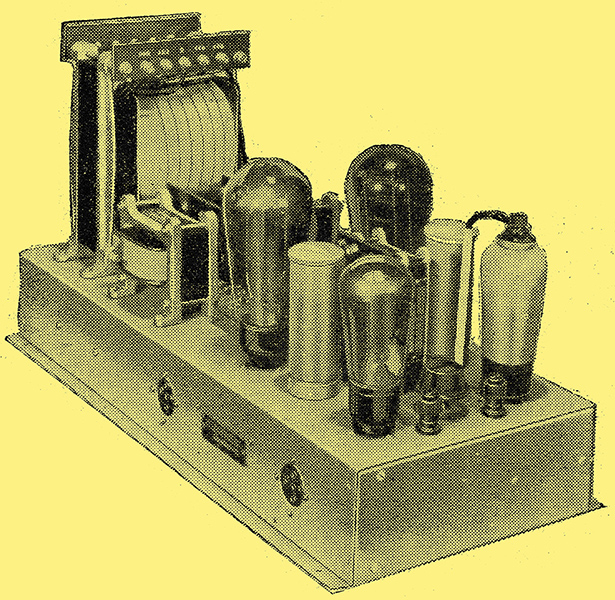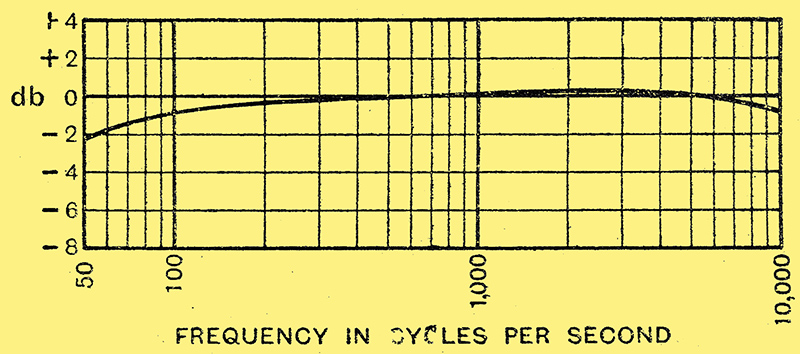|
Inexpensive PA equipment.

The amplifier top view.
The growing use of public address equipment has recently stimulated research into methods of obtaining a large output from an. amplifier with a minimum of cost, while still maintaining a high standard of reproduction - One of the most successful of these systems was recently described in The Wireless World [★] March 15, 1935 and is colloquially known as the 'low-loading' output circuit. Two valves of very low internal resistance are employed in push-pull in the output stage, and are operated under such conditions that while the system can be described neither as Class B nor QPP, the anode current fluctuates with the signal in a similar manner. Using this system, an output of no less than 30 Watts can be obtained from an pair of PX25A valves.
This arrangement is employed in the output stage of the new 30 Watt amplifier produced by Sound Sales, of Tremlett Grove Works, junction Road, Highgate, London, N19. An ML4 valve is used in the preceding stage, and is coupled to the output stage by means of a choke-fed push-pull transformer. The first stage is fitted with an HF pentode and is resistance coupled, The mains equipment is of most generous design and a full-wave mercury-vapour rectifying valve is used. A separate metal rectifier is employed for the grid bias source, since it is out of the question to employ automatic bias when the anode current of the valves fluctuates.
The amplifier is assembled with the mains equipment on a single chassis, and an input volume control is fitted in such a position that it can be conveniently operated by means of an extension shaft from a horizontally placed gramophone motor board fitted above the amplifier. The output transformer is not fitted to the chassis, but is supplied as a separate component wound to suit any loud speaker. The amplifier is priced at £25 complete with valves and output transformer and a radio feeder-unit is available at £6;.
On test, the amplifiers gave at very good performance, and the curve shows that at 50 Hz the response falls by only 2.4 db. and at 10 kHz by only 0.8 db. This curve includes the losses in the output transformer. The input required to obtain an output of 30 Watts is of the order of 0.005 Volt, so that it can be fully loaded from any pick-up of normal design. The hum-level is (below audibility, and the equipment can confidently be recommended for any case where an output of 30 Watts or less is needed.

Response curve.
|